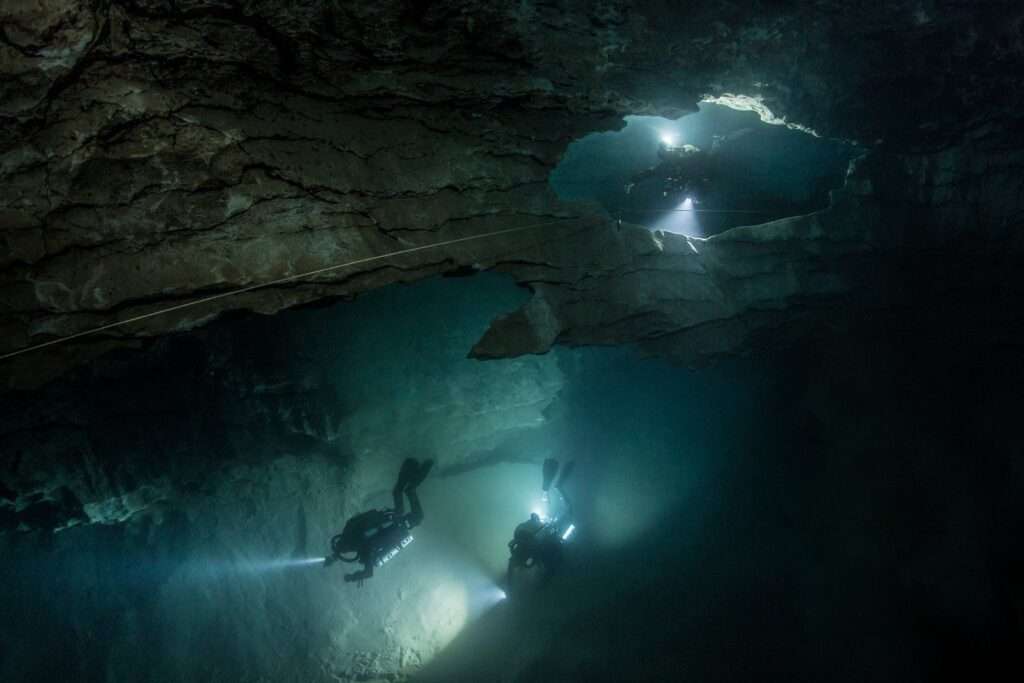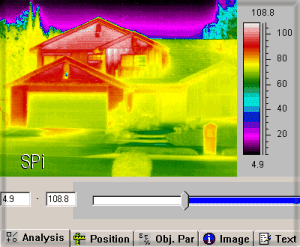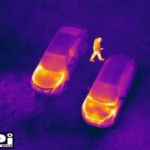Will thermal imaging work underwater?

Thermal imaging works by detecting differences in infrared radiation (heat) emitted by different objects. In general, thermal imaging devices are not designed to work underwater, and there are several reasons for this.
Firstly, water is a great conductor of heat and tends to equalize temperature differences quickly, which makes it difficult for a thermal camera to detect differences in temperature. This means that objects in water often do not contrast very much in temperature from the surrounding water, making them hard to detect with thermal imaging.
Secondly, infrared radiation does not travel well through water. Water absorbs infrared radiation, and the longer the wavelength of the infrared, the more it is absorbed. This means that even if there were temperature differences to detect, the infrared radiation would not reach the thermal camera through the water.
Lastly, the design of thermal imaging devices generally isn’t suitable for underwater use. They are typically not waterproof, and even if they were, the optical components are designed for use in air and would not focus properly in water due to the different refractive index.
However, for underwater imaging, other technologies like sonar (which uses sound waves) or conventional visible light cameras are typically used. For detecting temperature differences underwater, technologies like fiber optic temperature sensing may be used
Can thermal imaging see through walls?

Thermal imaging cameras cannot see through walls in the conventional sense of directly viewing what’s on the other side of a wall, but they can help detect differences in temperature that can indicate what’s behind a surface. This is because thermal cameras detect the infrared energy (heat) an object emits, which can vary based on the object’s temperature and emissivity.
For example, if a wall is not well-insulated, the thermal camera can detect the heat leaking from the house, creating a warmer “hotspot” on the wall when viewed through the thermal camera. Similarly, hidden pipes or ductwork that are carrying hot water or air will emit heat that can be detected by a thermal camera.
However, thermal imaging is not X-ray vision and cannot directly reveal objects or people behind a solid wall. It’s important to note that materials such as glass, which are transparent in the visible spectrum, are opaque in the thermal spectrum, so thermal imaging cameras cannot see through glass.
In contrast, some materials that are opaque in the visible spectrum, like thin plastic or thin fabric, can be seen through by thermal cameras because they allow transmission of infrared radiation to some degree. But this largely depends on the thickness and specific type of material.
Ca
Can thermal imaging detect cancer?

Thermal imaging, also known as thermography, does not directly detect cancer. However, it can be used as a supplemental tool in the diagnostic process because it can identify areas of temperature difference in the body. Here’s why: Cancer cells are growing and multiplying rapidly, and this activity generates heat. This heat can be picked up by a thermal imaging camera, creating a “hot spot” that might indicate a tumor.
However, thermal imaging isn’t precise enough to be used as a standalone diagnostic tool. For example, it can’t distinguish between cancerous and non-cancerous cells, and it can’t determine the stage or type of cancer. It also can’t see through tissue, so it can’t detect tumors that aren’t close to the surface of the skin.
Moreover, not all cancers generate enough heat to be detected this way, and other conditions can also create hot spots, such as infections or inflammation. Therefore, while thermal imaging can sometimes provide helpful information, it’s usually used in conjunction with other diagnostic methods, like biopsies and imaging tests like mammograms, MRI, or CT scans.
As always, if you suspect you might have cancer, it’s crucial to consult with a healthcare provider who can guide you through the appropriate diagnostic process.
Conclusion
In wrapping up this discussion, it’s clear that thermal imaging is a sophisticated technology with a range of applications, yet it also has its limitations. It cannot penetrate walls, nor can it function underwater or underground due to the fundamental principles of heat transfer it operates on.
Regarding the medical field, thermal imaging can’t directly detect cancer. It can, however, identify temperature irregularities on the skin’s surface, which might indicate underlying issues. It’s crucial to note that thermal imaging is a complementary tool and should not replace traditional diagnostic procedures and consultations with medical professionals.
We trust that this discourse has provided valuable insights into the capabilities and constraints of thermal imaging technology. Your engagement with this material is much appreciated. We strive to offer the most relevant, accurate, and insightful content for professionals in the field, and we look forward to continuing to serve as a reliable resource in your ongoing professional development.- Sierra Pacific Imaging Corp
Thank you for your time and participation in this dialogue. We welcome further inquiries and discussions as we continue to explore the expanding landscape of advanced imaging technology.



